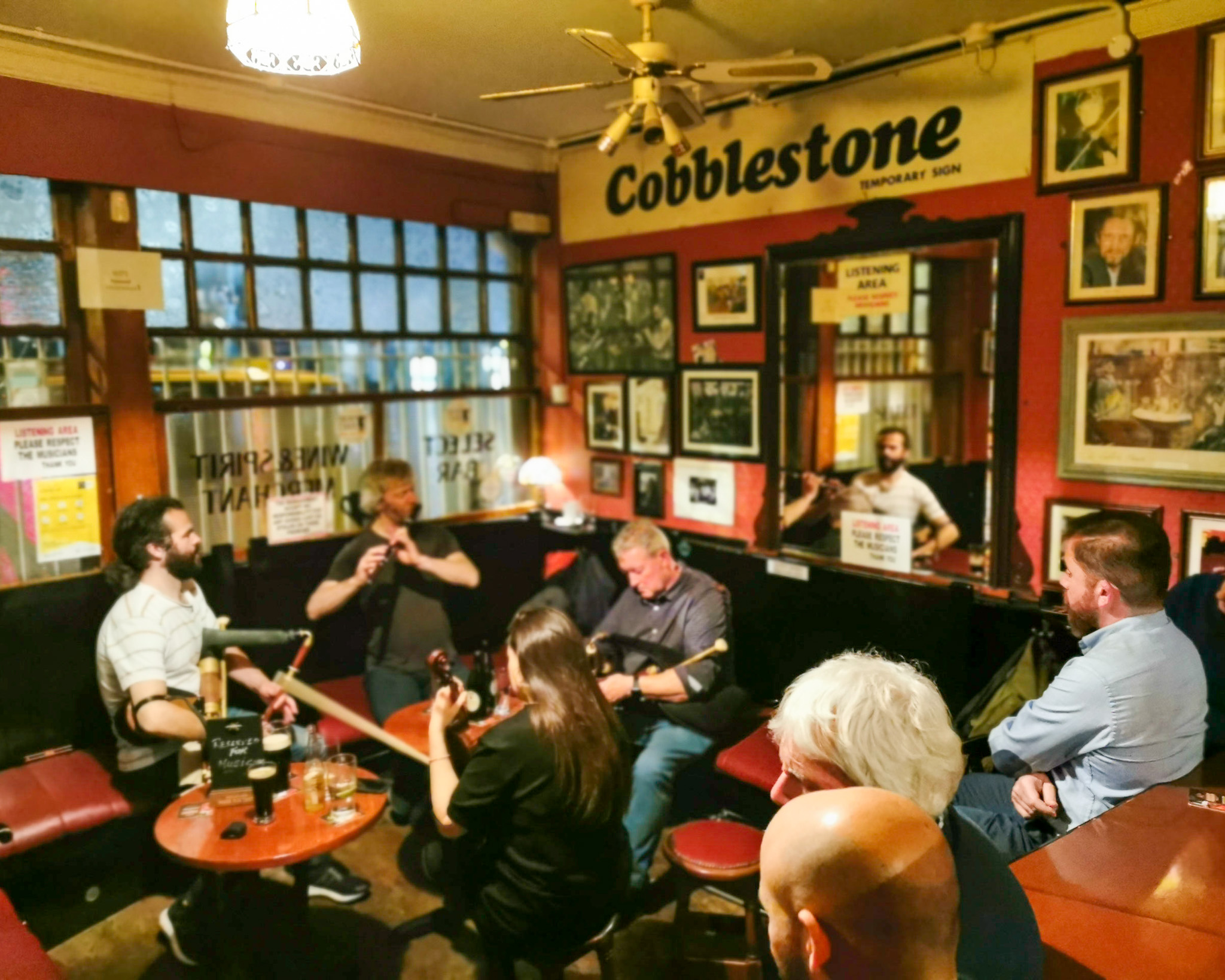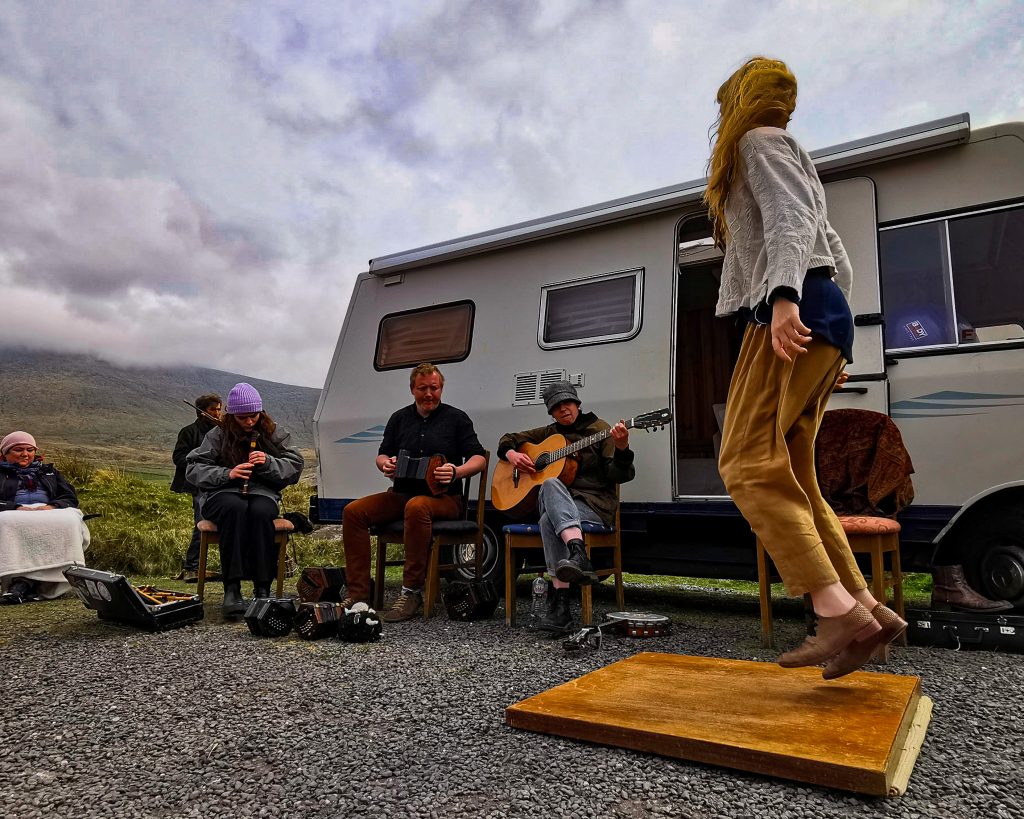
The history of music in Ireland can be traced back to ten thousand years ago. Musical instruments like trumpets, horns, rattles and pipes have been found in sies as far back as the Bronze Age.
We will explore some of the history of this history and the development of Irish music in a series of posts over this summer. Sign up to our email newsletter and/or follow us on our social media channels to stay in touch with these posts.
Some of these, such as the Loughnashade Horn, can be seen in the National Museum of Ireland. Contemporary musicians such as Simon O’Dwyer have popularised tones from this era are performed today. You can learn more from his website here – and follow him on Instagram here
According to the excellent book ‘Irish Traditional Music’ by Gearóid Ó hAllmhuráin the music of Celtic and Early Christian Ireland is elusive and undocumented but it must have existed. Much of what is associated with as ‘Celtic music’ today is born from the romantic notions of ‘Celtic Revival’ of the late 1800’s.
The early centuries of the first millenia were illiterate in Ireland so there is no written record of any of the culture. The earliest record of music is referred to in the ancient Brehon laws of Ireland so it was known by these times. The 8th century Críth Gablach refers to the legal standing of the cruitire or harper and places him above all other musicians in the social pyramid.
Harping has long associations with Ireland and eventually was superseded by pipers as the former was replaced by the later for a variety of reasons. Harpers had a similar standing top the bó-aire or strong farmer in the Gaelic caste system as it existed.

Musicians feature strongly in the early prose sagas, especially the four great collections or cycles – The Mythological, the Ulster, the Fianna and the Kings Cycles. These stories were transmitted orally for centuries and are part and parcel of the creation myths of Irish heritage.
Music focused on the geantraí (music of happiness), goltraí (music of sadness) and suantraí (music of sleep and meditation). There are references to musicians and their instruments in the mythological Battle of Magh Tuireadh fought between the magical Tuatha Dé Danann and the fierce Formorians of the north Atlantic.
The early Christian monks must have had chants and have sung psalms but little evidence exists of these. Musical instruments are evident in much of the art of the Celtic Crosses of the time so we know there was music.
In the medieval period following the Normans arriving in Ireland the bardic tradition was still very strong. The bards worked closely with the poets or file whose eulogies to the lords were recited by reacaire or a reciter. These would have been accompanied by a cruitire (harper) in their performance.
There is no reference at all to dancing in the accounts that survive but we must assume some kind of dancing did occur. The two Irish, or Gaelic words, for dancing rince and damhsa are derived from the English rink and the French danse respectively and they were not introduced until the late sixteenth century.
Earlier reports of dancing appear in the early 15th century in Baltimore, Co. Cork so we know there was some movement on the dancefloor so to speak. The most famous of all irish instruments is ‘Brian Boru’s harp’ which is on display in the Trinity College Dublin library and is dated from 15th century. Join us on our Trinity College Dublin and national Museum tour to explore some of the artefacts mentioned in this piece.
The website ‘Bard Mythologies’ is an excellent place to start to explore more on these fantastic stories.